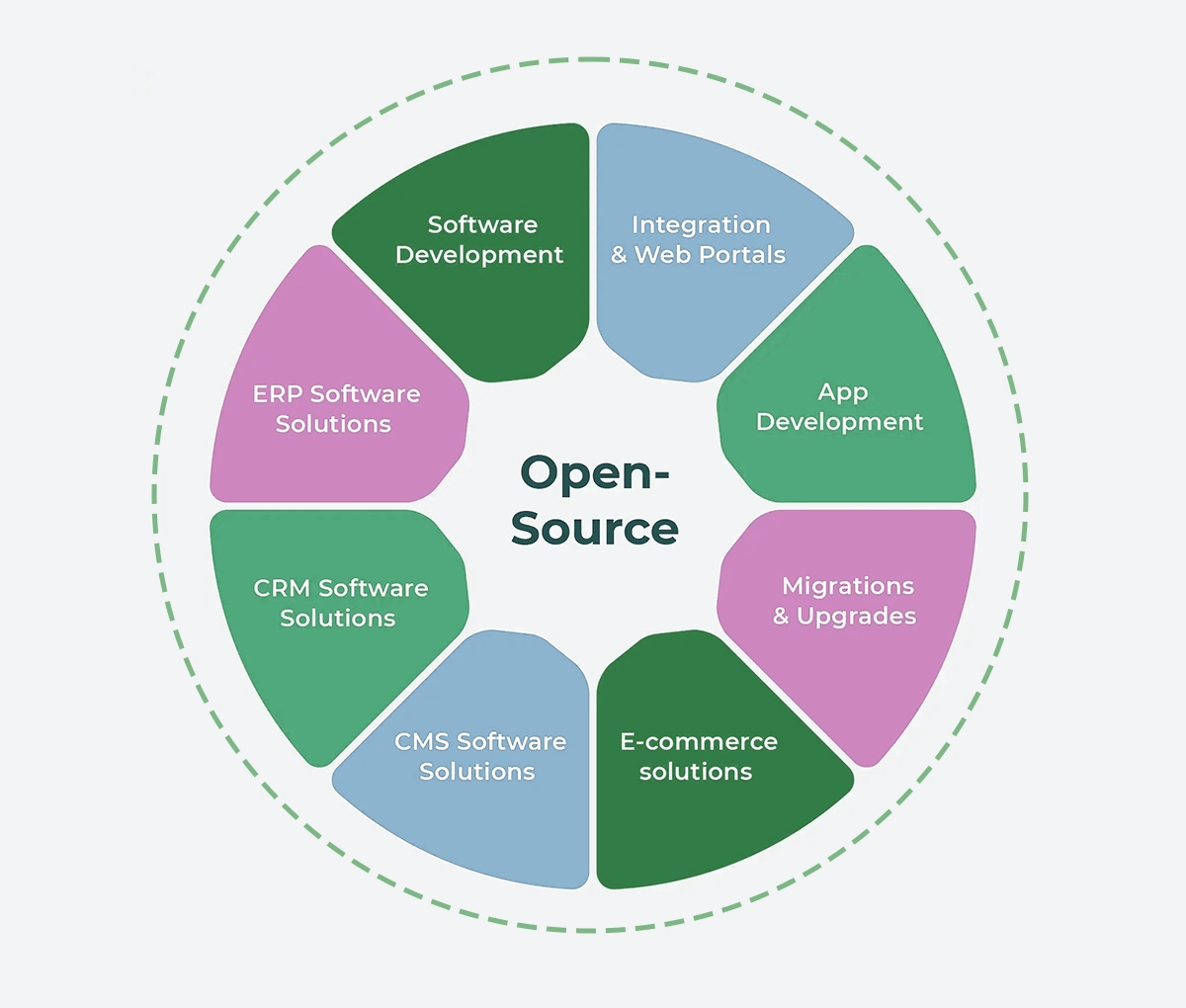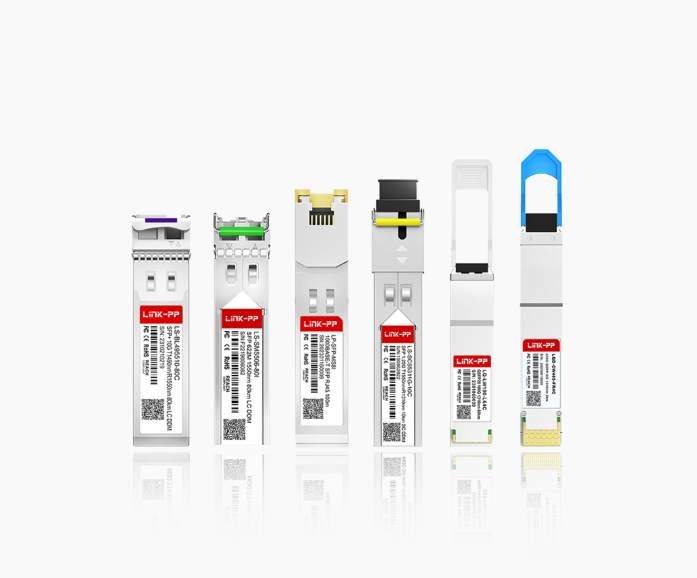
In the digital landscape, few movements have been as transformative as the rise of Open Source Software (OSS). It's the invisible engine powering everything from the smartphone in your pocket to the vast servers of the cloud. But what exactly is it? At its core, OSS is software with a license that grants users the rights to use, study, change, and distribute the software and its source code to anyone and for any purpose. This collaborative model has shattered traditional development paradigms, fostering unparalleled innovation and community-driven progress.
This article will guide you through the essentials of OSS, its undeniable benefits, its application in cutting-edge fields, and how it synergizes with modern hardware, including a look at optical modules. Understanding the advantages of open source software for business scalability is no longer optional; it's a strategic imperative for staying competitive.
✅ Key Takeaways
Open source software lets anyone see, use, and change the code. This freedom helps people be creative and work together.
You can find open source software on sites like GitHub and SourceForge. These websites have many projects you can look at and join.
Open source software is usually free, so it saves money for students, teachers, and businesses.
Being part of the open source community helps you learn new things and meet new people. You can help even if you do not know how to code.
Always check the license and get software from safe places to use open source tools safely.
✅ What is Open Source Software? The Core Philosophy
Open Source Software (OSS) is built on a foundation of transparency and collaboration. Unlike proprietary software, where the source code is a guarded secret, OSS makes its code publicly accessible. This "open kitchen" approach allows a global community of developers to inspect, modify, and enhance the software.
The key principles, as defined by the Open Source Initiative (OSI), include:
Free Redistribution: The license shall not restrict any party from selling or giving away the software.
Source Code: The program must include source code and allow distribution in both source and compiled forms.
Derived Works: The license must allow modifications and derived works, and must allow them to be distributed under the same terms as the original software.
This model has given birth to foundational technologies like the Linux operating system, the Apache web server, and the MySQL database.
✅ Key Advantages and Considerations of Adopting OSS
Why are enterprises and individuals flocking to OSS? The benefits are substantial, but it's crucial to have a clear strategy.
Advantages ✅ | Considerations ⚠️ |
|---|---|
Cost-Effectiveness: Typically free to license, reducing upfront software costs. | Support & Maintenance: While community support is vast, formal enterprise-grade support may require paid subscriptions. |
Flexibility & Customization: Freedom to tailor the software to exact business needs. | Complexity: Some solutions may require significant in-house expertise to deploy and manage effectively. |
Security & Transparency: The "many eyes" theory suggests vulnerabilities are found and patched faster. | Integration Challenges: Ensuring compatibility with existing proprietary systems can require additional effort. |
Freedom from Vendor Lock-in: Reduces dependency on a single vendor's roadmap and pricing. | Hidden Costs: Potential costs for custom development, integration, and specialized support. |
For organizations looking to implement enterprise-level open source solutions, partnering with experts can help navigate these considerations seamlessly.
✅ Open Source in Action: Powering Modern Infrastructure
OSS is the backbone of the modern internet and enterprise IT. Here’s how:
Cloud Computing & Big Data: Platforms like OpenStack and Kubernetes are OSS projects that manage massive cloud infrastructures. Hadoop and Spark process enormous datasets.
Web Development: Over 40% of all websites run on the open source Apache or Nginx web servers.
Artificial Intelligence & Machine Learning: Frameworks like TensorFlow and PyTorch have democratized AI research and application development.
The reliability and security benefits of open source software in networking make it the default choice for building resilient, scalable infrastructure. This is especially true when managing complex hardware, which brings us to a critical component in modern data centers.

✅ The Synergy of Open Source and Optical Module Management
🔦 A Deep Dive into Optical Modules
In the realm of high-speed data transmission, particularly within data centers and telecom networks, optical transceivers are indispensable. These small, hot-pluggable devices convert electrical signals into light signals and vice versa, transmitting data over fiber optic cables. They are crucial for achieving the high bandwidth and low latency required for cloud services, streaming, and 5G.
So, where does open source software come in?
The management and orchestration of these complex network environments are increasingly handled by open source platforms. Tools like Open Network Linux (ONL) and the Stratum project provide open, standardized interfaces for managing network switches and their components, including optical modules. This open approach:
Enables Vendor Neutrality: Avoids being locked into a single hardware vendor's proprietary management software.
Facilitates Automation: Allows for seamless integration into DevOps and CI/CD pipelines using open source automation tools like Ansible or Chef.
Provides Deep Visibility: Open source monitoring tools like Prometheus and Grafana can be configured to pull detailed diagnostics from optical modules, such as temperature, transmit power, and receive power, enabling predictive maintenance.
For instance, an enterprise using a LINK-PP 100G QSFP28 LR4 optical module in their spine-leaf data center architecture can leverage open source NOS (Network Operating System) software to monitor its health in real-time, ensuring optimal performance and preemptively identifying potential link failures. This powerful combination of robust hardware like LINK-PP's 400G ZR+ coherent modules with flexible open source management software creates a future-proof and highly efficient network infrastructure.
✅ Getting Started with Open Source: A Practical Guide
Embarking on your OSS journey can be straightforward.
Identify Your Need: Start with a specific problem. Do you need a new CRM, a web server, or a data analytics tool?
Research & Evaluate: Look for projects with active communities, good documentation, and a strong reputation. GitHub is an excellent resource.
Start Small: Pilot a non-critical project. Test the software in a controlled environment.
Engage with the Community: Use forums, mailing lists, and issue trackers. Contributing back, even with bug reports, is part of the open-source ethos.
Consider Professional Support: For mission-critical deployments, evaluate vendors who offer commercial support for the OSS you choose.
✅ Conclusion: Building the Future, Together
Open Source Software (OSS) is more than a development model; it's a philosophy that champions collaboration, transparency, and innovation. From powering the global internet to enabling precise control over advanced hardware like LINK-PP optical transceivers, OSS provides the foundational tools for building a more open and efficient digital world. The strategic implementation of open source for cost reduction and agility is a proven path to technological leadership.
🚀 Ready to harness the power of open source and optimize your network hardware performance?
Our experts can help you integrate robust solutions, including compatible high-performance components. 👉 [Contact us today] to discuss how LINK-PP and open source software can transform your infrastructure!
✅ FAQ
What can you do with open source?
You can use open source to learn, create, and share. You can change how programs work. You can join projects and help others. You can find tools for school, work, or fun.
What makes open source different from other software?
Open source lets you see and change the code. You can share your changes. Most other software keeps the code hidden. You must use it as it is.
What are some popular open source tools?
You can try LibreOffice for documents, VLC for videos, and GIMP for images. These open source tools help you with many tasks. You find new tools every year.
What should you check before using open source software?
You should read the license. You should look for updates. You should download from trusted websites. You can ask questions in the community if you need help.
What is the best way to start with open source?
You can start by exploring projects on GitHub or SourceForge. You can read guides and join forums. You can test programs and share feedback. You help open source grow when you get involved.




